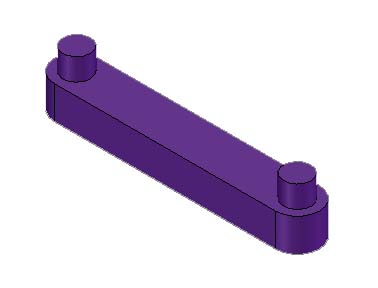Injection Molding
by Chris Weindorf and Trevor Tse

Injection Molding
by Chris Weindorf and Trevor Tse

How does the process work?
The process consists of two parts. First, the mold has to be produced then the
part can be produced using the injection molding machine. Also, the material
for the silicone mold has to be mixed.
How are parts built?
Making the mold
1. Make a mold box from metal for injection molding. If your going to be pouring
the mixture into the mold by hand, the box can be made from wood, plastic or
hard cardboard. Make the box slightly larger than the part your producing. Spray
the inside of the box with mold release so the mold does not stick to the box.
If using plastic, make sure the plastic is compatible with the mold release.
2. The part that is being produced should be suspended in the middle of the
box either by making holes in the middle of the box to suspend the part or by
putting the part on top of a screw or mount.
3. The silicone mold material comes in two parts. They are mixed together in
a 1:1 ratio. Make about 20% more of the silicone mold material than needed.
Mix/pour time usually takes about 10 minutes. If you want to make a two part
mold, pour the material into a corner of the box and fill it half way. Allow
the material to flow freely. Otherwise for a one part mold, make enough mixture
to fill the whole box. Then cut the mold into two halves and create a hole for
injection molding. Skip 4 and 5 for one part molds.
4. Once the rubber has cured, make holes on the corners of the mold with a
knife. These holes will be used for putting the two molds together. Spray the
top of the mold with mold release. Now repeat step 3 to fill the mold box.
5. Once the rubber has cured, separate the two molds and with a knife cut a
hole on the wider side for injection molding.
Injection Molding Machine
The injection molding process is done cyclically. Cycle times range from 10
to 100 seconds which depends on the cooling time of the thermoplastic. First
the plastic resin has to be melted. The injection molding machine will then
fill the mold with the melted plastic resin and hold under high pressure. When
the resin has cooled, the machine will add more resin to fill the mold. Eventually,
the mold is cooled and the part is removed. The machine will get ready for production
of the next part. Look at the manual for instructions on using the machine.
How is design information transmitted to the manufacturing process?
The design information is used to make the mold. After the mold is produced,
making the part becomes a lot cheaper and can be repeated many times.
What materials does the process use?
The material used to make the mold is a silcone based chemical whcich cures into a rubber substance. From this mold, the piece can be made from any type of plastic.
What are the size and shape limitations on the parts?
Although injection molding is very accurate with surface details, it is very difficult to design a mold with alot of detail. It is very likely that the piece will break when trying to extract it from the mold. Pieces from a mold also cannot be hollow since the material is poured into the mold. Holes can be done, but must be close to vertical in order to be able to remove them from the mold. Very large pieces are not feasable because the mold might not be strong enough to hold its shape under the heat and stress. Other than that, any piece can be molded if it can be easily made from prototyping method.
How much do parts cost? How quickly can parts be manufactured?
The costs of the process come from the mold, the materials, and the labor. Making
the mold will cost about $75 per hour depending which process you use. The materials
for the mold and the piece will total about $100 for the mold chemical, resin
for the piece, and the release agent. Labor and machine costs are $30-75 per
hour depending on the machine.
The design of the mold will take about 2-4 hours, depending on the amount of detail. The majority of the process is waiting for the mold and piece to cure. The mold will take about 24 hours to cure and the piece will take a couple hours to set. The time to actually mix the chemicals and pour the mold and piece is less than an hour total.
Links
http://www.micromark.com/part_mold.html
http://www.engr.uconn.edu/cheg/polymer/injmold.htm
http://www-2.cs.cmu.edu/~rapidproto/manufacturing/MP_Manual.pdf